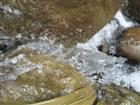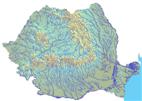Download short presentation Download 'Ethnosal Project - short presentation' .PDF file
ETHNOSAL -THE SALT WATER SPRINGS OF MOLDAVIA
THE ETHNOARCHAEOLOGY OF A POLYVALENT NATURAL RESOURCE
NATIONAL UNIVERSITY RESEARCH COUNCIL (CNCSIS), ROMANIA, PN-II-IDEI, CODE 414/2007, NO. 167/2007.
The Moldavian area and mineral waters
 The sub-Carpathian area has been characterized by a high density of salt water springs to which archaeological traits concerning the salt water exploitment and appraisal can be traced in a considerable degree since the early Neolithic to the modern period inclusively.
The sub-Carpathian area has been characterized by a high density of salt water springs to which archaeological traits concerning the salt water exploitment and appraisal can be traced in a considerable degree since the early Neolithic to the modern period inclusively.
This region is nowadays the only one in Europe where traditional and non-industrial ways of the salt water exploitation are still intensively applied, irrespective of any means of mechanisation, economic organisation and legal regulation, hence becoming similar on certain respects to the pre-industrial societies. This outstanding unique condition stands for the ideal framework in order to achieve a complex ethnoarchaeological research, a specific top direction in the field of archaeological inquiry.
 Thus, the implementation of the ethnographic analogy for the comprehension of the archaeological conditions related to the salt water spring appraisal is a highly appropriate methodological approach, enabled by the space and time unity. The research aims two main targets: the detection of the SWS and of the related archaeological remains, as well as the ethnologic investigations through the spatial analysis perspective.
Thus, the implementation of the ethnographic analogy for the comprehension of the archaeological conditions related to the salt water spring appraisal is a highly appropriate methodological approach, enabled by the space and time unity. The research aims two main targets: the detection of the SWS and of the related archaeological remains, as well as the ethnologic investigations through the spatial analysis perspective.
The ethnologic inquiries refer to: the exploitment and appraisal methods implied, means of transport, containers, distance, frequency, the supply, redistribution, and social organization behaviours, trade, ethnoscience, symbolical approach.
Thus modellized and interpreted as such on all their dimensions, and corroborated to the available ancient and mediaeval sources, these information will become a steady and reliable database (which valuate a unique situation in Europe) to be applied as a reference anywhere in the world where the archeological remains concerning the exploitment of the salt water springs can be traced and remained unrelated to the modern methods of supply..


